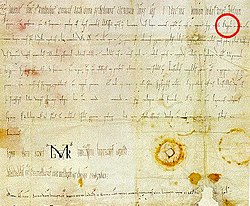History of Austria

The history of Austria covers the history of Austria and its predecessor states, from the Early Stone Age to the present state.
The name Ostarrîchi (Austria) has been in use since 996 AD. Then, it was a margravate of the Duchy of Bavaria. Afterwards, from 1156, it became an independent duchy (later archduchy) of the Holy Roman Empire of the German Nation (Heiliges Römisches Reich 962–1806).
The House of Habsburg and House of Habsburg-Lorraine (Haus Österreich) dominated Austria from 1273 to 1918. In 1806, when Emperor Francis I of Austria dissolved the Holy Roman Empire, Austria became the Austrian Empire. It was also part of the German Confederation until the Austro-Prussian War of 1866. In 1867, Austria formed a dual monarchy with Hungary: the Austro-Hungarian Empire (1867–1918). Austria was reduced to the German-speaking areas of the empire (its current frontiers), after its collapse in 1918. It adopted the name The Republic of German-Austria. However, union with Germany and the chosen country name were forbidden by the Allies at the Treaty of Versailles. This led to the creation of the First Austrian Republic (1919-1933).
Following the First Republic, Austrofascism tried to keep Austria independent from the German Reich. Engelbert Dollfuss accepted that most Austrians were German and Austrian, but wanted Austria to remain independent from Germany. In 1938, Adolf Hitler annexed Austria to the German Reich with the Anschluss. A large majority of the Austrian people supported it. Ten years after the Second World War, Austria again became an independent republic as the Second Austrian Republic in 1955.
Austria joined the European Union in 1995.